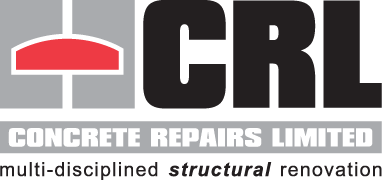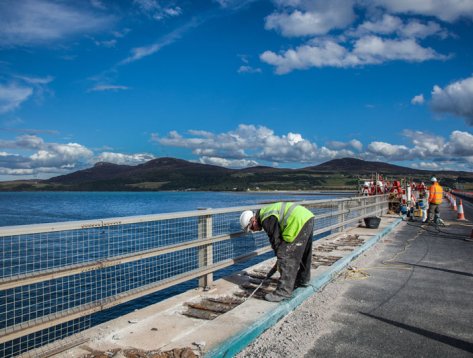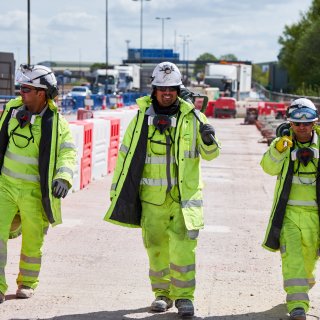Cathodic Protection in the Highlands
The works included concrete repairs to the deck structure and the installation of a sacrificial anode CP system to the deck beams, pile caps and steel piles. In addition to this, the bridge was fully waterproofed and resurfaced and all parapets were renewed.
One of the major challenges on the project was to come up with an access system that was quick to install and could be hung from the existing structure. This aspect of the work was satisfied using a combination of traditional hanging scaffold and a decking system suspended from tensioned cables called WebDeck. Both of these systems had to be carefully positioned to ensure the underside of the platform was above the level of the highest tide.
It quickly became obvious that our biggest enemy on this project would be the changing seasons. We decided that we would have to devise a means of shortening the contract duration to avoid the works running into the late autumn months.
In order to make this saving in time the site team managed to negotiate a short full closure of the bridge by implementing a local traffic diversion to allow the waterproofing and resurfacing works to be carried out in a single month. This resulted in a six-week reducing in the overall works programme, with CRL leaving site in mid-October instead of late November as originally planned.
The area where the bridge crosses is an area with incredibly diverse wildlife. One of the environmental challenges of the project was the protection of sea otters that were living in the rock armour at either end of the bridge. These are a protected species and we had to take care not to disturb them during the works.

"A difficult project in a far-away place, made more difficult by the extreme weather and the environmental considerations."
Alisdair MacDonald | Senior Contracts Manager | CRL















